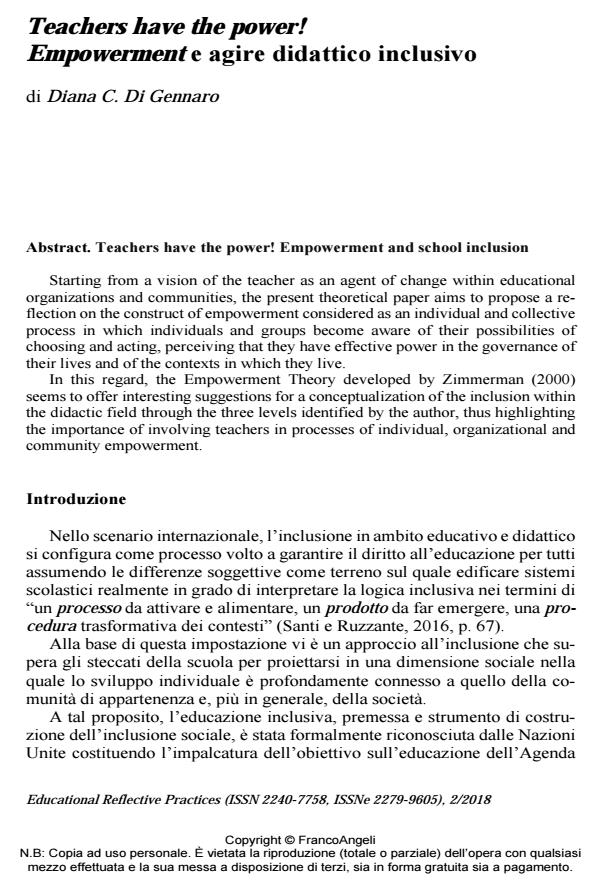Teachers have the power! Empowerment and school inclusion
Journal title EDUCATIONAL REFLECTIVE PRACTICES
Author/s Diana C. Di Gennaro
Publishing Year 2019 Issue 2018/2
Language Italian Pages 13 P. 143-155 File size 178 KB
DOI 10.3280/ERP2018-002010
DOI is like a bar code for intellectual property: to have more infomation
click here
Below, you can see the article first page
If you want to buy this article in PDF format, you can do it, following the instructions to buy download credits

FrancoAngeli is member of Publishers International Linking Association, Inc (PILA), a not-for-profit association which run the CrossRef service enabling links to and from online scholarly content.
Starting from a vision of the teacher as an agent of change within educational organizations and communities, the present theoretical paper aims to propose a reflection on the construct of empowerment considered as an individual and collective process in which individuals and groups become aware of their possibilities of choosing and acting, perceiving that they have effective power in the governance of their lives and of the contexts in which they live. In this regard, the Empowerment Theory developed by Zimmerman (2000) seems to offer interesting suggestions for a conceptualization of the inclusion with-in the didactic field through the three levels identified by the author, thus highlight-ing the importance of involving teachers in processes of individual, organizational and community empowerment.
Diana C. Di Gennaro, Teachers have the power! Empowerment e agire didattico inclusivo in "EDUCATIONAL REFLECTIVE PRACTICES" 2/2018, pp 143-155, DOI: 10.3280/ERP2018-002010